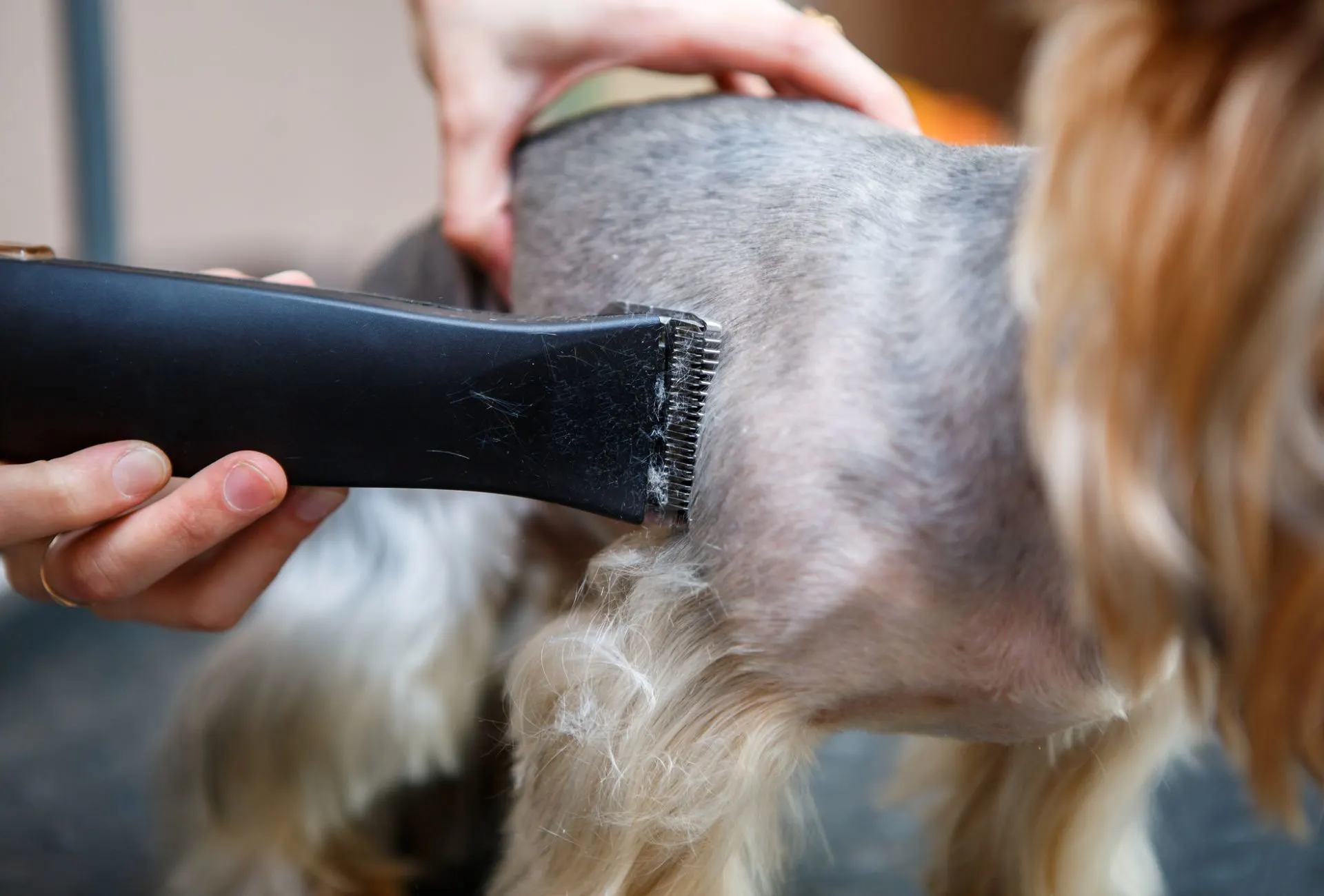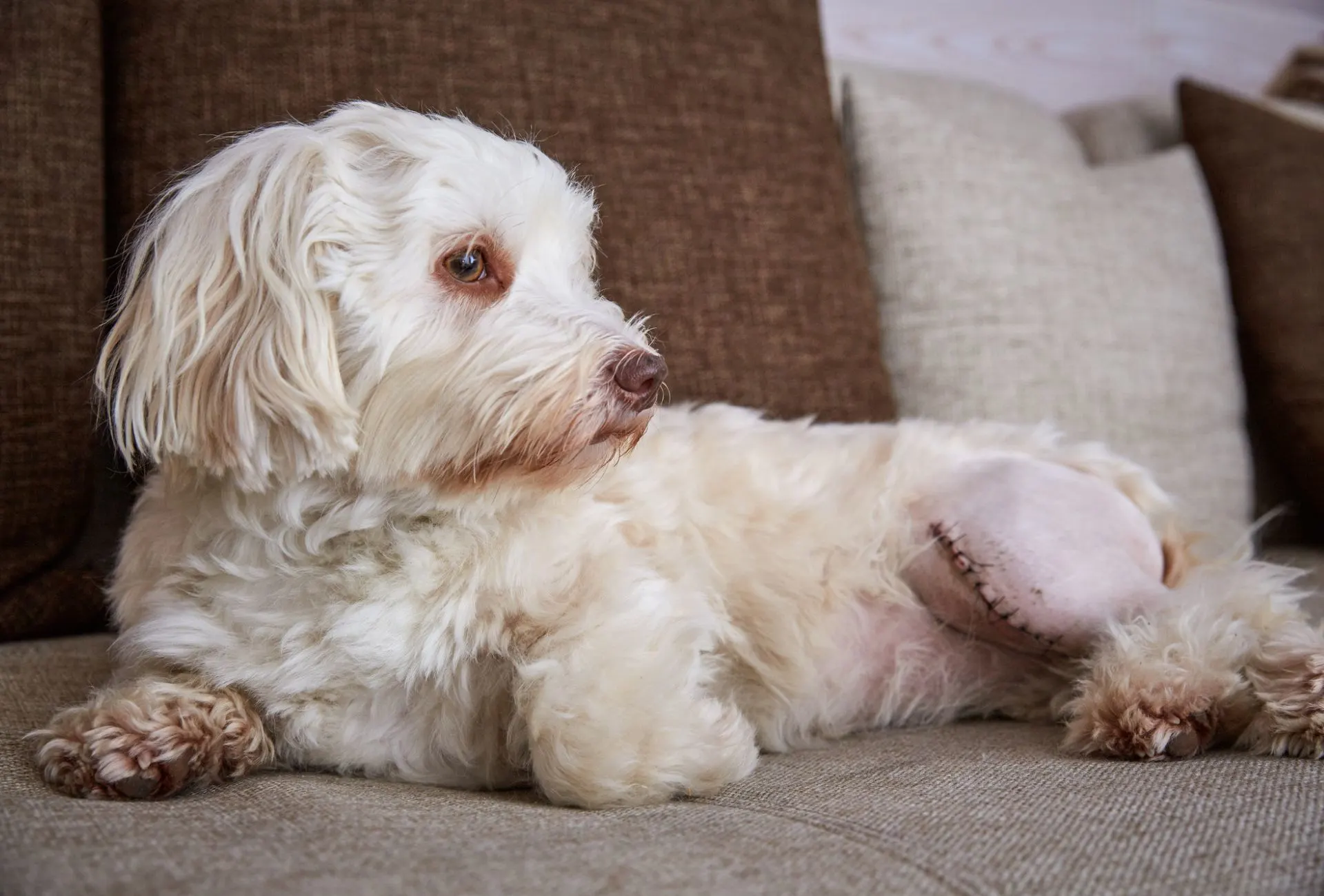If your dog has been shaved for whatever reason or if you are thinking about doing it, you may be concerned about your dog’s future coat.
Will it grow back to the way it was before or will you be left with a whole new dog?
Sometimes there is just no way around it and if your dog requires surgery, shaving will most likely be part of it.
Generally, dog hair grows back after shaving but what if nothing happens for a few months or your dog has a double coat?
Clipping your dog’s hair should be no problem but when it comes to shaving there are a few things you should look out for.
Does Dog Hair Grow Back After Shaving?
Dog hair does grow back after shaving in most cases, whether a dog has been fully shaved or has received a fresh haircut. However, diseases such as post-clipping alopecia can result in poor hair growth.
Most dogs will never be confronted with shaving (as grooming) at any point in their life.
Whether your dog has been shaved for the summer, due to a grooming accident, or in preparation for surgery (more on that below), worrying about his coat regrowth is totally understandable.
You may have even come across horror stories on the internet that reported about the horrible coat changes that have happened after shaving.
As a disclaimer, I do not recommend completely shaving your dog since there is no real need for it apart from surgeries, matting, or other health issues.
So don’t pick up a clipper after reading this article and start shaving your dog, this post is merely to help you understand what happens with a dog’s coat after shaving and that it’s not the end of the world.

If you are thinking about shaving your dog for the summer, there are better ways to keep your dog cool and trimming is way less damaging than a full shave.
When it comes to coats, dogs have two different types namely single coats and double coats.
Double coats consist of two layers that grow independently from one another and the much shorter undercoat grows faster than the soft and longer topcoat.
Dogs with a single coat such as Dachshunds, Poodles, and Dalmatians should have fewer problems regrowing their coat.
Dogs with dense double coats could be left with a different appearance after shaving since the undercoat usually grows faster than the protective topcoat.
This could result in a patchy or damaged coat that does not grow back evenly.
Shaving a dog with a double coat also doesn’t reduce shedding although you may see a temporary difference, the amount of hair shed is still the same and the individual hairs are just shorter.
How Long Does It Take for Dog Hair to Grow Back After Shaving?
Dog hair can take anywhere from 2 to 4 months to fully grow back after shaving and the specific timeframe depends on coat length, type, season, age, and health.
To get a more accurate prediction we first have to understand how dog hair cycles work.
There are four main hair cycles: anagen, catagen, telogen and exogen.
Anagen describes the growing phase during which the hair follicles push out new hairs that will continue to grow until they are cut or until they reach the end of their lifespan.
The catagen or transition phase happens when the hair follicles shrink and the growth slows or completely stops.
Telogen is the resting phase and just like the name suggests, hair doesn’t do a lot during this time and mainly rests unchanged.
When your dog begins to shed his hair, he has entered the final stage, the exogen phase.
Each of these cycles is affected by various factors:
- Breed
- Hormones
- Coat type
- Coat length
- Health
- Age
- Environmental factors
Breeds like the German Shepherd, Husky, and Golden Retriever with thick double coats can take several months to fully regrow their hair.
Hair has a lot to do with hormones and certain imbalances can greatly influence growth.
Various hormonal diseases like hypothyroidism and other health problems can lead to stunted hair growth or even hair loss.
A study on shaved Labradors investigated how environmental factor influence hair growth and how long it takes for dogs to regrow their hair after a clipping for a surgical procedure.
Eleven Labrador Retrievers were recruited during spring, ten during summer, six during autumn, and ten during winter.
The researchers came to the following conclusion:
Hairs re-grew to their preclipped length in 14.6 weeks, 14.5 weeks, 13.6 weeks and 15.4 weeks when shaved in the spring, summer, autumn and winter, respectively.
The differences in these values were not significant suggesting that season has no effect on the rate of hair re-growth in Labrador retrievers housed indoors.
An analysis of canine hair re-growth after clipping for a surgical procedure

Dog Hair Is Not Growing Back After Surgery
Sometimes you can’t get around shaving your dog and one of those scenarios is surgery.
Even small incisions will require the surrounding area to be shaved completely.
This is mostly for sterility reasons so no hair and/or bacteria can enter the surgical site.
Additionally, certain areas on the legs must also be hairless to put in IV access for fluids and/or medication during the procedure.
Once the surgical incision has healed, the fur should grow back normally.
But what if that isn’t the case?
Depending on the scar and the number of damaged hair follicles, the immediate area around it may not fully regain its usual appearance.
If your dog’s hair doesn’t grow back at all after the surgery, your dog might suffer from post-clipping alopecia.
This affects dogs with dense double coats more than those without.
There is not one definite cause for this condition and some experts assume that the sudden cooling of the skin could alter the hair regrowth pattern.
Endocrine disorders such as hypothyroidism and Cushing disease may also cause this.
If your dog is healthy, the missing hair is mainly a cosmetic issue. However, the exposed skin is more susceptible to sunburn so consider using sun protective measures.
What Dog Breeds Should Not Be Shaved?
Dog breeds with double coats such as the Siberian Husky, German Shepherd, and Border Collie should not be shaved to prevent possible, unwanted coat changes and issues with thermal regulation.
As mentioned before, dogs with double coats can be left with a patchy coat after shaving.
If the topcoat doesn’t fully regrow, your dog might be left with an unruly undercoat that is more prone to matting without the soft protection.
Contrary to popular belief, a fully shaved dog can actually have a harder time cooling down in the summer.
Dog coats act like insulation, keeping your dog warm in the winter but also cool in the summer.
Stripping a dog of this natural cooling system can lead to overheating, sunburns, and other health issues.
Dogs will naturally begin to shed their undercoat before the summer to promote air circulation while still protecting your dog from sunburn and biting insects.
How Can I Help My Dog’s Hair Grow?
There are a few home remedies you can try to assist your dog’s hair regrowth after shaving.
As a topical treatment, you can apply olive oil, coconut oil, or aloe vera on your dog’s skin.
None of these can guarantee hair growth but they may promote healthy skin which, in turn, can encourage hair growth.
Also, consider giving your dog skin support supplements that contain Omega-3 to boost the hair growth process.
Do not give your dog anything without consulting your vet and do not apply topical home remedies on the surgical incision.
Disclaimer: This blog post does not substitute veterinary attention and does not intend to do so. I am not a veterinarian or pet nutritionist. If your dog shows any sign of illness, call your vet.